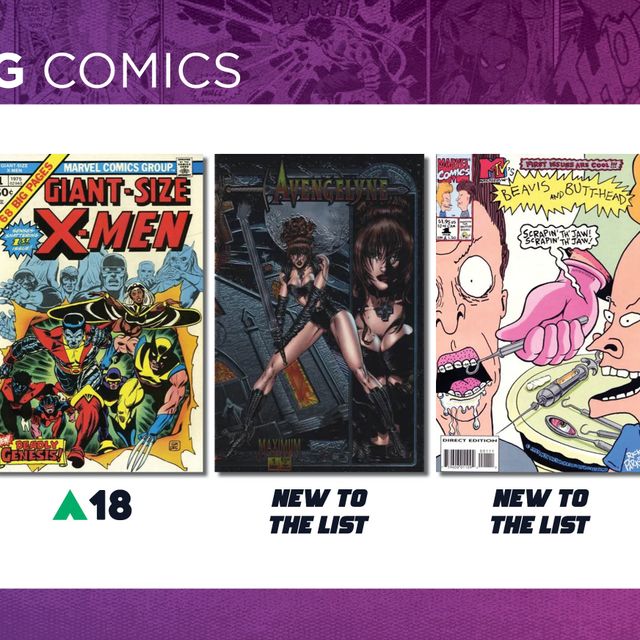 Censorship is as American as apple pie. Movies and TV shows all have been censored and given a rating for the public to know what is safe for young viewers. So it's not a surprise that comics have been heavily censored as well. The "Approved By the Comics Code Authority" stamp, was an icon found on all comic books. It was placed on all comics before the 21st Century indicating that it conforms to the proper standards. But what happened that we don't see it anymore? Where did it go? Is it hidden somewhere within the book like an Easter Egg? All answers and more below!
Censorship is as American as apple pie. Movies and TV shows all have been censored and given a rating for the public to know what is safe for young viewers. So it's not a surprise that comics have been heavily censored as well. The "Approved By the Comics Code Authority" stamp, was an icon found on all comic books. It was placed on all comics before the 21st Century indicating that it conforms to the proper standards. But what happened that we don't see it anymore? Where did it go? Is it hidden somewhere within the book like an Easter Egg? All answers and more below!
Quick History on Comics Code
 Before we dive into what happened to it, let's go over its history first. The year is 1954 and Psychiatrist Fredric Wertham just published his book "Seduction of the Innocent". Wertham goes on to say how comic books make a negative impact on our youth and are a huge cause of juvenile delinquency. This book was taken very seriously especially by parents. Many of those parents joined together and started to campaign for censorship. This sparked a congressional inquiry into comic books. In order to avoid government control over comics, publishers established a way to self-censor their titles. This lead to the creation of the Comics Code Authority (CCA).
Before we dive into what happened to it, let's go over its history first. The year is 1954 and Psychiatrist Fredric Wertham just published his book "Seduction of the Innocent". Wertham goes on to say how comic books make a negative impact on our youth and are a huge cause of juvenile delinquency. This book was taken very seriously especially by parents. Many of those parents joined together and started to campaign for censorship. This sparked a congressional inquiry into comic books. In order to avoid government control over comics, publishers established a way to self-censor their titles. This lead to the creation of the Comics Code Authority (CCA).
The Comics Code Authority
The Comics Code Authority was formed in order to avoid government regulation of comics. Members submitted their books to the CCA for approval. Then the CCA will screen the books to make sure they adhere to their rules and regulations. If found in compliance, they would be allowed to showcase the infamous stamp on the cover. The CCA had a decent size code criteria list that is listed below. This list had to be followed by many of the publishers in order to get an approval stamp. Although not a law, many advertisers preferred placing ads on books that contained that stamp.
Here are some of the guidelines creators had to follow:
- Crimes shall never be presented in such a way as to create sympathy for the criminal, to promote distrust of the forces of law and justice, or to inspire others with a desire to imitate criminals.
- Policemen, judges, government officials, and respected institutions shall never be presented in such a way as to create disrespect for established authority.
- In every instance, good shall triumph over evil and the criminal punished for his misdeeds.
- No comic magazine shall use the words "horror" or "terror" in its title.
- All scenes of horror, excessive bloodshed, gory or gruesome crimes, depravity, lust, sadism, masochism shall not be permitted.
- All lurid, unsavory, gruesome illustrations shall be eliminated.
- Inclusion of stories dealing with evil shall be used or shall be published only where the intent is to illustrate a moral issue and in no case shall evil be presented alluringly, nor so as to injure the sensibilities of the reader.
- Profanity, obscenity, smut, vulgarity, or words or symbols which have acquired undesirable meanings are forbidden.
- Nudity in any form is prohibited, as is indecent or undue exposure.
- Females shall be drawn realistically without exaggeration of any physical qualities.
- Seduction and rape shall never be shown or suggested.
Stan Lee Vs. CCA
 The guidelines were revised numerous times with creators bumping heads over what should be approved. One such creator is the infamous and legendary Stan Lee. Around 1975, the Department of Health and Education approached Stan Lee, Editor-in-Chief of Marvel Comics, to produce a Spider-Man storyline about drug abuse. Of course, Lee agreed and produced a 3 part story about the dangers of drug use. Even though the CCA did approve one other comic involving drug use, they denied Lee's storyline. So what did Stan do? He published it anyways! Amazing Spider-Man #96-98 "Green Goblin Reborn!" sees Spidey save a guy who jumped off a roof due to drugs. Spider-man states "I would rather face a hundred super-villains than throw my life away on hard drugs because it is a battle you cannot win!". He also helps Harry from overdosing after seeing Mary Jane show affection to Peter.
The guidelines were revised numerous times with creators bumping heads over what should be approved. One such creator is the infamous and legendary Stan Lee. Around 1975, the Department of Health and Education approached Stan Lee, Editor-in-Chief of Marvel Comics, to produce a Spider-Man storyline about drug abuse. Of course, Lee agreed and produced a 3 part story about the dangers of drug use. Even though the CCA did approve one other comic involving drug use, they denied Lee's storyline. So what did Stan do? He published it anyways! Amazing Spider-Man #96-98 "Green Goblin Reborn!" sees Spidey save a guy who jumped off a roof due to drugs. Spider-man states "I would rather face a hundred super-villains than throw my life away on hard drugs because it is a battle you cannot win!". He also helps Harry from overdosing after seeing Mary Jane show affection to Peter.
Being received so well, this book ended up changing the rigidity of the CCA, revising the rules again. In 2001 Marvel abandoned the Code as well as many other publishers. This marked the end of the Comics Code. Publishers soon started to incorporate a rating system similar to that used in Movies. DC started its own label for adult readers named, "DC Black Label." The first DC comic to receive that label was Batman: Damned. By 2011, no one used the code and it went defunct.

Bottom Line
The Comics Code was a means to an end. Publishers did not want to give censorship control over to the government. In creating their own code they were able to self-censor their work and still have some liberties. This hindered much creativity during these times. Luckily for legends like Stan Lee who went against the code. They were able to show how strict the rules were and brought about change. Now comics have a more general rating standard which makes it easier for people to distinguish who the attended reader is.
Hope you enjoyed learning a little about Comic Book History!
Till Next Time, Happy Hunting!


